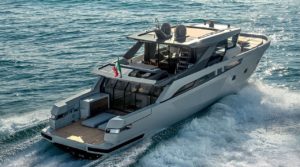RLS enabled distress beacon receives EU approval
The FastFind ReturnLink personal location beacon (PLB) from Orolia Maritime has been approved for production and will be available in countries across Europe from December.
Working closely with the European GNSS Agency (GSA) to implement Galileo satellite system services in its beacons under the framework of the H2020 project Helios, Orolia has developed search and rescue (SAR) distress beacons with the capability to receive Return Link Messages (RLM). The Galileo Return Link Service, which allows people in distress to receive automatic acknowledgement that their signal has been received and their location is known, was declared operational in January 2020.
The FastFind ReturnLink transmits the user’s unique ID and GNSS location via the global network of Cospas Sarsat search and rescue satellites. Galileo’s Return Link Service transmits a return signal back to the user’s beacon. It displays a blue light to inform the user that the alert has been processed and location has been detected.
“The Search and Rescue community has long known the survival impact of dealing with a distress situation on your own, either as a solo adventurer or as a group that feels isolated due to the lack of communication with the outside world,” says Chris Loizou, Vice President of Maritime at Orolia. “The Return Link reassurance signal will reduce the chances of rash decisions taken by those who feel they have nothing to lose, such as leaving the site of an accident or attempting to swim to safety. The psychological impact of knowing that help is on the way cannot be underestimated, and this PLB will provide invaluable peace of mind for those in distress.”
The FastFind ReturnLink also offers the accelerated location detection with combined Galileo and GPS GNSS receivers and Orolia’s 406MHz technology. The company says it is its most advanced search and rescue beacon to date, using the latest MEOSAR utilising advanced technology packed into a simple, rugged, lightweight, palm-sized unit.
The first production run will be available in December 2020 with full production supporting orders in 2021.











